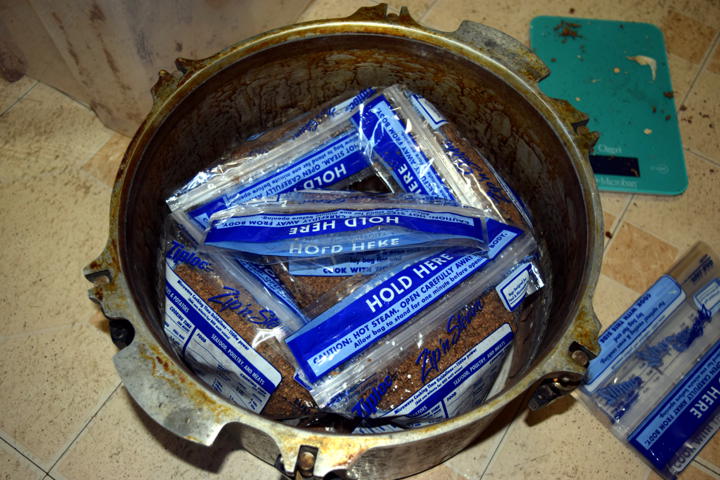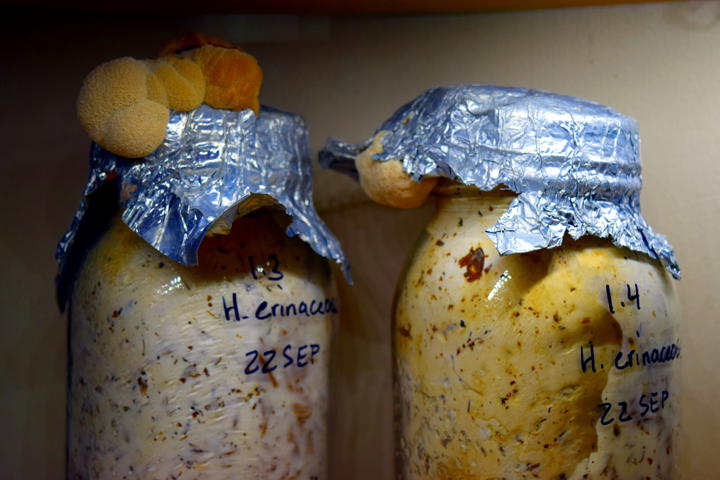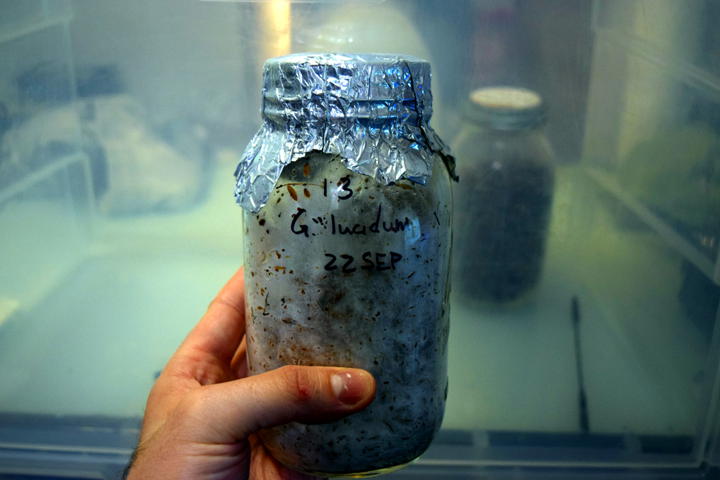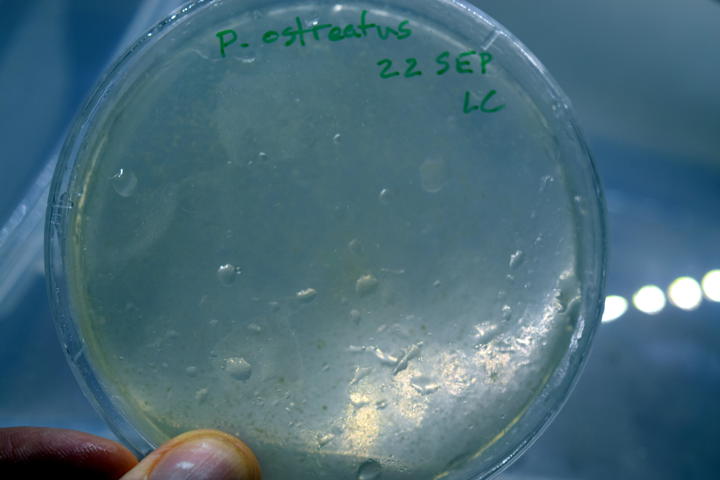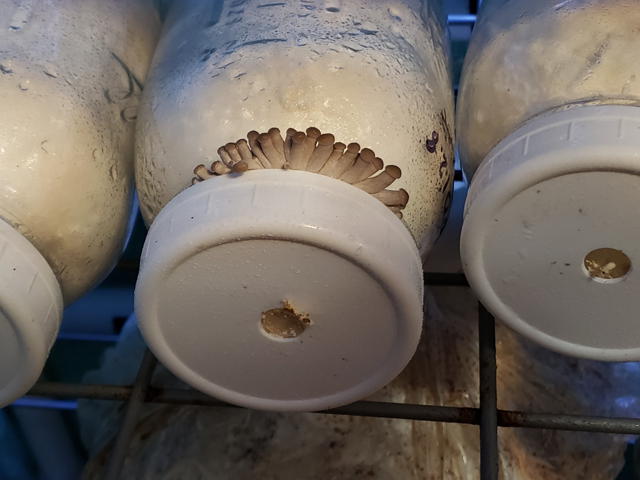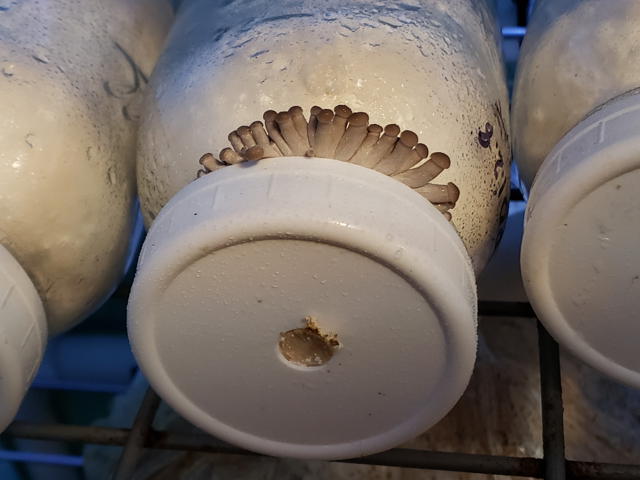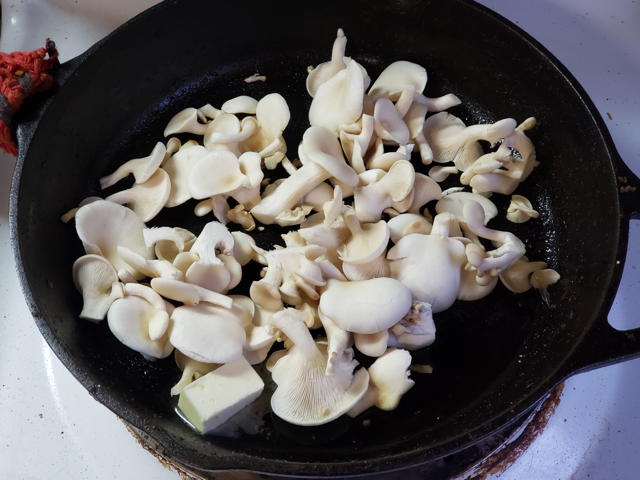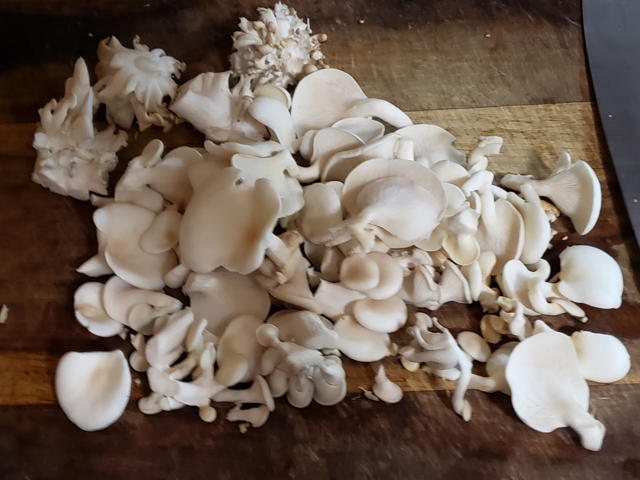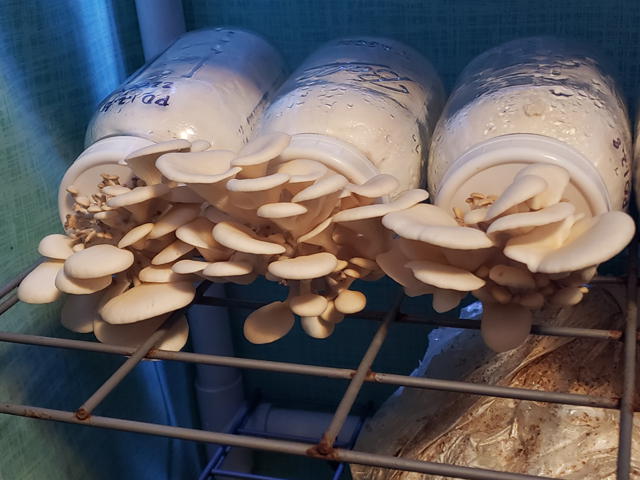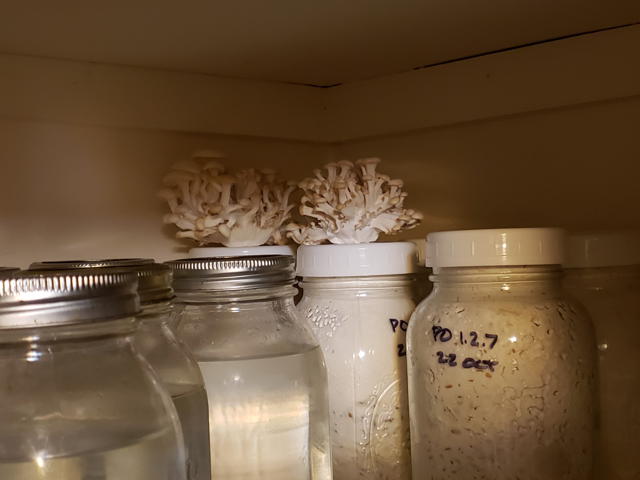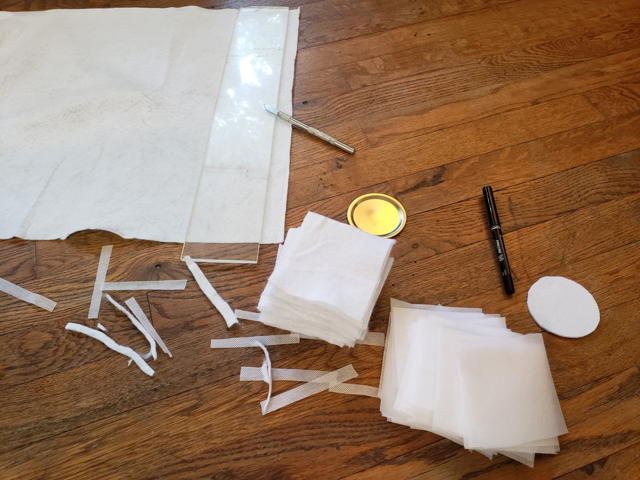Work Log
09 Nov 2021
Consolidated Plastics has some nice polypropylene smooth-side jars. Their 16 and 32 ounce jars would be suitable for solid and semi-solid sterile culture work. They seem to be a bulk seller–dealing only in packages of 40 or more at a time.
03 Nov 2021
Trying a new fruiting substrate formula:
- 1500g pelletized corn cob bedding
- 1500g pelletized hardwood sawdust
- 150g oat bran
- 5L water (added water until field capacity)
- ~1c gypsum
- ~1/4c calcium carbonate
- the morning’s used coffee ground (20g dry)
I would have preferred ~20% wheat bran, but that was all I had left. ~5% will have to do.
06 Oct 2020
2nd generation grain for Lion’s mane and reishi jars. I started three of each and only had time to transfer one of each. The two jars of militaris has yet to reach 100% coverage.
One Lion’s mane jar had contamination. Considering my success rate with agar lately, I don’t believe it was my technique.
I am not going to have the space to grow all of these jars out. Guess they will have to be Christmas presents or something.
28 Sep 2020
Started Lion’s Mane, Reishi, and C. militaris grain masters from LC. Standard no-rinse, no-soak oat prep.
I attempted to resurrect some old Shiitake and Oyster LCs on agar. No such luck. I guess 4 years is just too old.
12 Jan 2019
Studying the various process techniques and grains for spawn production.
Process Variables
- Rinse
- Soak
- Sterilization times
- Sterilization temperatures
Grains
- Wheat
- hard winter red
- gold
- bulk
- Rye
- Millet (sorghum)
- popping
- gold
- Economy Bird Seed mix
- Popcorn
- Sunflower seeds
- Oats
Grain Characteristics
- As packaged
- density
- moisture content
- roughage percentage
- “floaters” percentage
- 24 hour soak
- density
- moisture content
- bursting percentage
- Contamination frequency
05 Jan 2019
- volatile organic compounds that inhibit pinning and fruiting (Noble et al. 2009)
04 Jan 2019
Investigating local substrates and supplements
I’m looking into vitamin and mineral supplementation. - What about formulated feed pellets with amendments? - Producers Pride 12% - SSF in tubes and extension rates for various substrate mixtures would be ideal (Philippoussis and Diamantopoulou 2015) - Gathering some other data on productivity besides just growth rate and BE? - crude protein, fat, carbohydrate assays? - C/N ratio - ash - water content
What to select for?
- Ultimately appearance and fresh weight are primary factors affecting sale price (labeling may also contribute)
- profit is based mainly on product weight per unit time less labor and substrate costs
- Labeling: variations on how ‘Local’ (Burnett, Kuethe, and Price 2011)
- Price Premiums: Local; Organic; Carbon-Footprint; (Onozaka and Mcfadden 2011)
29 Dec 2018
Started research collection on ideal substrate formulas.
Bibliography
Burnett, Perry, Todd H. Kuethe, and Curtis Price. 2011. “Consumer Preference for Locally Grown Produce: An Analysis of Willingness-to-Pay and Geographic Scale.” Journal of Agriculture, Food Systems, and Community Development 2 (1): 269–78. https://doi.org/10.5304/jafscd.2011.021.013.
Noble, R, Andreja Dobrovin-Pennington, Philip J Hobbs, Jemma Pederby, and Alison Rodger. 2009. “Volatile C8 Compounds and Pseudomonads Influence Primordium Formation of Agaricus Bisporus.” Mycologia 101 (August): 583–91. https://doi.org/10.3852/07-194.
Onozaka, Yuko, and Dawn Thilmany Mcfadden. 2011. “Does Local Labeling Complement or Compete with Other Sustainable Labels? A Conjoint Analysis of Direct and Joint Values for Fresh Produce Claim.” American Journal of Agricultural Economics 93 (3): 693–706. https://doi.org/10.1093/ajae/aar005.
Philippoussis, Antonios, and Panagiota Diamantopoulou. 2015. “AGRO-FOOD INDUSTRY WASTES AND AGRICULTURAL RESIDUES CONVERSION INTO HIGH VALUE PRODUCTS BY MUSHROOM CULTIVATION.” In.
